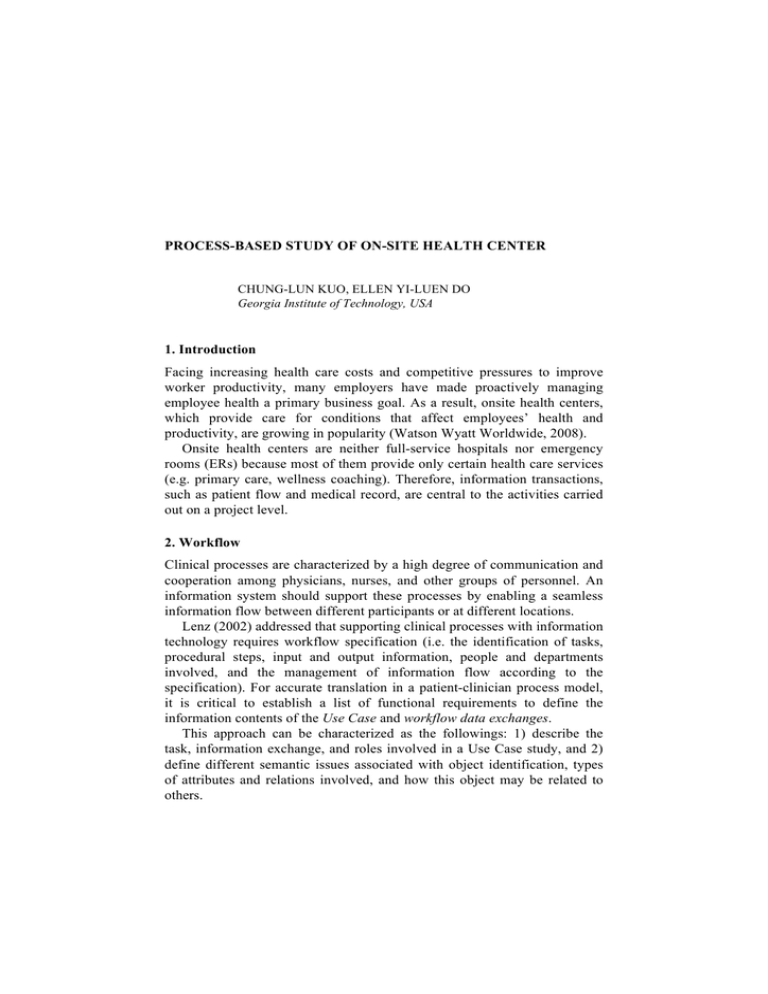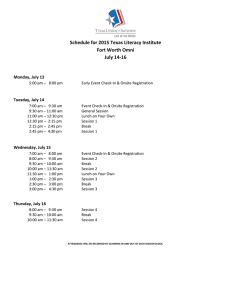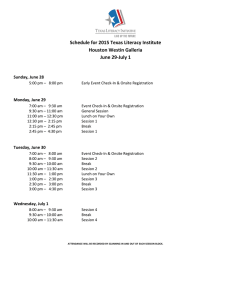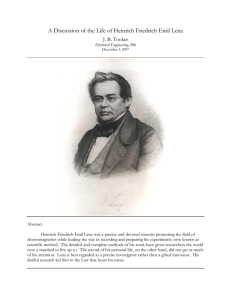PROCESS-BASED STUDY OF ON-SITE HEALTH CENTER 1. Introduction
advertisement

PROCESS-BASED STUDY OF ON-SITE HEALTH CENTER CHUNG-LUN KUO, ELLEN YI-LUEN DO Georgia Institute of Technology, USA 1. Introduction Facing increasing health care costs and competitive pressures to improve worker productivity, many employers have made proactively managing employee health a primary business goal. As a result, onsite health centers, which provide care for conditions that affect employees’ health and productivity, are growing in popularity (Watson Wyatt Worldwide, 2008). Onsite health centers are neither full-service hospitals nor emergency rooms (ERs) because most of them provide only certain health care services (e.g. primary care, wellness coaching). Therefore, information transactions, such as patient flow and medical record, are central to the activities carried out on a project level. 2. Workflow Clinical processes are characterized by a high degree of communication and cooperation among physicians, nurses, and other groups of personnel. An information system should support these processes by enabling a seamless information flow between different participants or at different locations. Lenz (2002) addressed that supporting clinical processes with information technology requires workflow specification (i.e. the identification of tasks, procedural steps, input and output information, people and departments involved, and the management of information flow according to the specification). For accurate translation in a patient-clinician process model, it is critical to establish a list of functional requirements to define the information contents of the Use Case and workflow data exchanges. This approach can be characterized as the followings: 1) describe the task, information exchange, and roles involved in a Use Case study, and 2) define different semantic issues associated with object identification, types of attributes and relations involved, and how this object may be related to others. Fig1. Proposed process diagram of patient visit A proposed workflow, based on the approach mentioned in the previous paragraph, is to integrate most tasks in a single phase as opposed to conventional three phases of check-in, examination and check-out to achieve time and space efficiency. Figure 1 illustrates that the first data exchange, patient flow database, is linked to two tasks, patient enter and on call, while the second data exchange, medical record is inside of a use case which has tasks of wait for doctor/N.P. and on call. The task of on call communicates with a computerized check-in system rather than communicating with a receptionist in a conventional practice. This process is to consolidate three phases into one single phase and to create a closer data link among the tasks of a patient visit. 3. Acknowledgements This research is supported by the Comprehensive Health Services, Inc. The authors appreciate the valuable suggestions at every stage of the research. References Lenz, R, Elstner, T, Siegele, H, and Kuhn, K: 2002, A practical approach to process support in health information systems, JAMIA 9(6): 571-585 Sokolowski J, and Banks C: 2009, Principles of modeling and simulation: a multidisciplinary approach. John Wiley & Sons, Inc., Hoboken, New Jersey Watson Wyatt Worldwide, Inc.: 2008, Realizing the potential of onsite health centers, http://officemdsf.com/files/2008-US-0025_Watson_Wyatt_report.pdf





